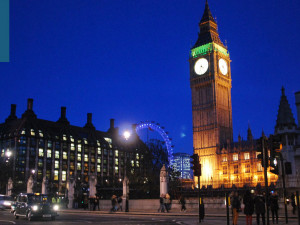
GDP grew in May despite concerns
Morning mid-market rates – The majors
14th July: Highlights
- Then there were six!
- Inflation at highest annual rate since 1982
- Germans may have to burn wood to stay warm this winter, warns Deutsche Bank
GBP – The economy managed a surprise growth spurt
Hunt immediately backed yesterday’s winner Rishi Sunak while Zahawi said he wanted his supporters to make up their own minds.
Sunak polled the most votes, 88. He was followed by the three female candidates, with Penny Morduant second.
Sunak’s support within the Parliamentary Party looks to be sufficiently solid, for him to be one of the two candidates who will proceed to the vote by Party members.
The other spot in the national vote looks to w be a straight fight between Morduant and Foreign Secretary Liz Truss.
The final decision on a new Party leader and Prime Minister will be taken on September 8th.
In the meantime, with the Government close to paralysis despite Boris Johnson having been apparently galvanized to achieve some results in his last few weeks in power, the twin issues of the cost-of-living crisis and inflation remain.
The Bank of England has apparently decided that its ability to tackle increases in the price of foodstuffs and energy is virtually non-existent since the price of both are out of its hands, since the drivers of the recent increases are rooted in the supply side of the economy.
The most recent inflation data showed that 40% of inflation was due to continued increases in these two sectors.
Chief Economist Huw pill spoke recently of the Bank being focussed on ensuring that wages didn’t spill over into the mainstream, but so far changes in monetary policy have not been effective.
There are several groups of workers, including train drivers, teachers, council employees and NHS staff, who are all looking for inflation-busting pay deals in the current round.
There was a ray of light seen yesterday that lifted the gloom around the downturn in the economy.
GDP grew by 0.5% in May, following a fall of 0.3% in April. Industrial production and manufacturing output also grew by 0.9% and 1.4% respectively.
While these may be little more than an anomaly, they could, on the other hand be an indication that the economy is not as weak as had been believed, and the New Prime Minister and his Cabinet will have something to work on rather than simply fire-fighting.
The pound traded between 1.1967 and 1.1827 yesterday but closed within a couple of points of its opening. Having pushed several major currencies to multi year lows, the market now appears undecided on their future path.
Recommend our services and earn up to £75 per successful referral
USD – Core slips back to 5.9%, lower but above expectations
The fairly hawkish policy of rate increases is having no effect on the price of food and energy, as demand remains unaffected by interest rate increases.
The Fed’s policy is clearly designed to cool demand in less volatile sectors and may be beginning to have an effect.
This, along with the FOMC member’s hawkish tendencies, will lead to another rate increase, most likely to seventy-five basis-points when the next meeting takes place in a little under two weeks’ time.
One of the most significant influences on inflation remains the current red-hot labour market.
It was generally expected, although there continues to be no reliable gauge, that the number of new jobs created each month would begin to tail off as supply chains returned to normal.
However, this has patently not been the case and job-hoppers moving within the employment market in search of higher wages remain prevalent. Data for weekly jobless claims show that the number of jobs filing for support remains fairly stable at around 200k per week.
Another financial institution, Bank of America, predicted a recession in the U.S. this year, laying out worrisome forces that are growing within the economy.
The bank believes that following a 6.9% increase last year, GDP will fall to just 1.4% this year and just 1% in 2023. Few of these predictions are followed by the reasoning behind the numbers, so they are beginning to be treated with scepticism, as was mentioned yesterday.
Consumer spending appears to be being slowed by rising interest rates. It fell for the first time this year in May, but this is part of the Fed’s strategy to cool demand. The same is beginning to show up in housing data releases as well.
Following a slew of hawkish comments from FOMC members over the past few weeks, they appear to have quieted down, possibly to concentrate on the next hike.
Only one or more dovish comments have been seen most recently.
The dollar index suffered yesterday from the markets’ indecision every time it made a new high. The question remains, is the current level of dollar strength justified by the economic reality, or is it a simple reaction to the divergence of monetary policy that is currently being seen.
Yesterday, the dollar index reached a new high of 108.58 having looked likely to begin a correction earlier in the day. It eventually settled back to close at 108.04.
EUR – Industrial production managed to grown in May
With the Central Bank being virtually held to ransom by rising inflation that sees the conflict in Ukraine have a devastating effect on supply of basic feedstuffs, and Russia tightens its grip on the supply of gas, rising inflation whether in the headline or within the core may have to be faced no matter the consequences for the economy.
It is believed that the wealthier and, by no coincidence, the more hawkish nations of the Union can cope with higher interest rates and this may, indeed, be the prescription they need to begin to thrive again, while the nations in need of support will see both their interest burdens grow and their ability to borrow on international markets diminish.
It has been said before, but monetary union without any form of fiscal cooperation is never going to be an effective long-term strategy. With Germany having lost its inspiration leader and architect of the modern EU, Angela Merkel, and France now weakened by the latest series of elections which have severely curtailed Emmanuel Macron’s wider ambitions, the region appears rudderless stumbling between crises.
The ECB will use traditional methods to fight inflation, even if it has been more than a little late onto the scene.
While the new tools that have been announced to allow the weaker economies to borrow on international markets and relieve the burden on the Central Bank will provide short term encouragement, they remain little more than an artificial panacea, which will not be sustainable in the long term.
The likes of Germany and Austria do not see their membership of the European Union as providing a guarantee to financially undisciplined nations that allow their public spending to rise to dangerous levels, safe in the knowledge that the ECB will eventually be forced to sustain their bad habits.
The markets remain convinced that the euro is doomed price-wise, even if its entire premise begins to crumble in the longer term.
It has built up a degree of support around parity with the dollar, and those who were fortunate enough to manage to but below parity may not see the opportunity arise again before the ECB meets. Yesterday’s low was 0.9998 but it rallied to close at 1.0063.

About Alan Hill
Alan has been involved in the FX market for more than 25 years and brings a wealth of experience to his content. His knowledge has been gained while trading through some of the most volatile periods of recent history. His commentary relies on an understanding of past events and how they will affect future market performance.”



